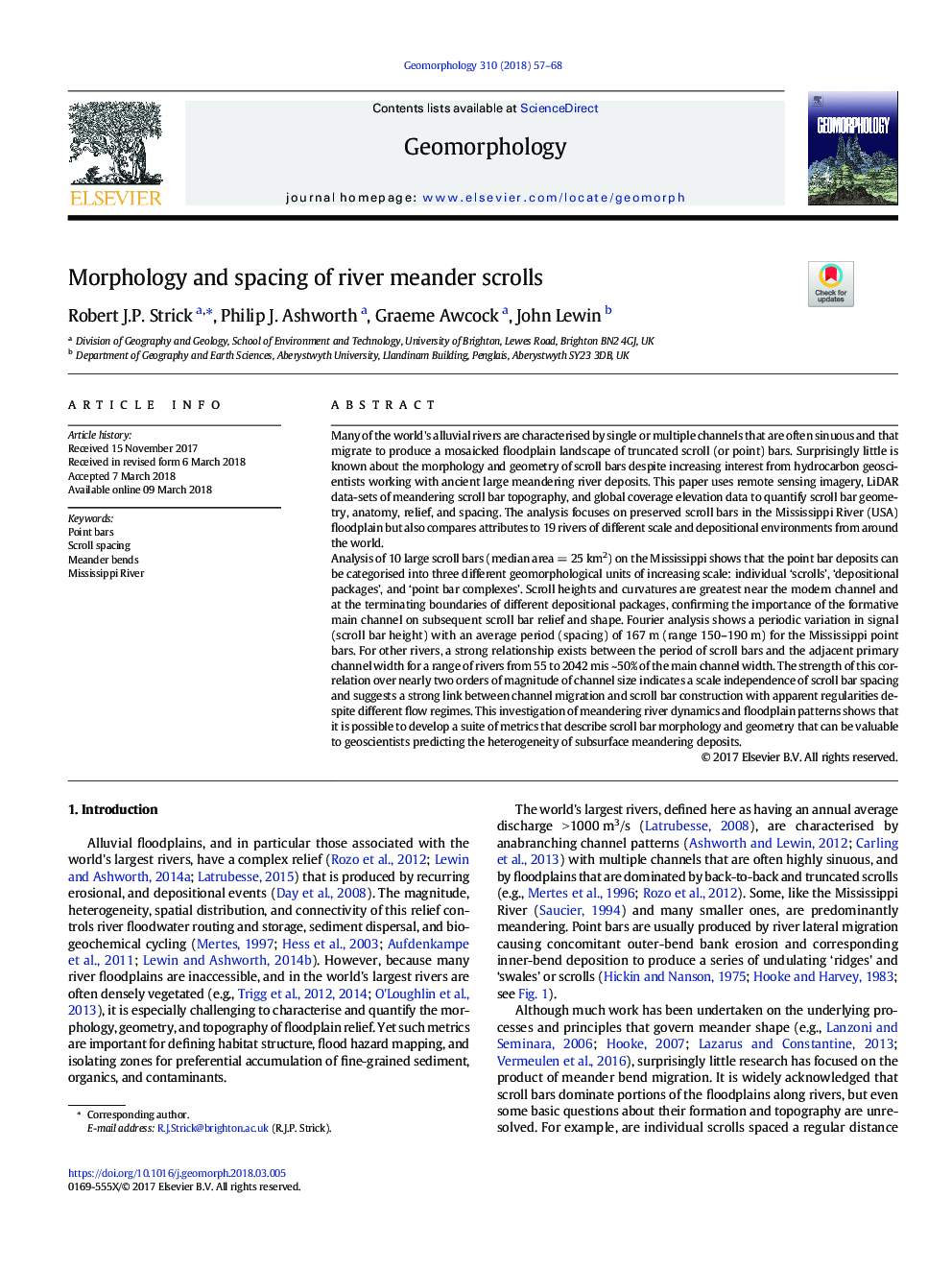| Article ID | Journal | Published Year | Pages | File Type |
|---|---|---|---|---|
| 8908040 | Geomorphology | 2018 | 12 Pages |
Abstract
Analysis of 10 large scroll bars (median areaâ¯=â¯25â¯km2) on the Mississippi shows that the point bar deposits can be categorised into three different geomorphological units of increasing scale: individual 'scrolls', 'depositional packages', and 'point bar complexes'. Scroll heights and curvatures are greatest near the modern channel and at the terminating boundaries of different depositional packages, confirming the importance of the formative main channel on subsequent scroll bar relief and shape. Fourier analysis shows a periodic variation in signal (scroll bar height) with an average period (spacing) of 167â¯m (range 150-190â¯m) for the Mississippi point bars. For other rivers, a strong relationship exists between the period of scroll bars and the adjacent primary channel width for a range of rivers from 55 to 2042â¯mis ~50% of the main channel width. The strength of this correlation over nearly two orders of magnitude of channel size indicates a scale independence of scroll bar spacing and suggests a strong link between channel migration and scroll bar construction with apparent regularities despite different flow regimes. This investigation of meandering river dynamics and floodplain patterns shows that it is possible to develop a suite of metrics that describe scroll bar morphology and geometry that can be valuable to geoscientists predicting the heterogeneity of subsurface meandering deposits.
Keywords
Related Topics
Physical Sciences and Engineering
Earth and Planetary Sciences
Earth-Surface Processes
Authors
Robert J.P. Strick, Philip J. Ashworth, Graeme Awcock, John Lewin,
